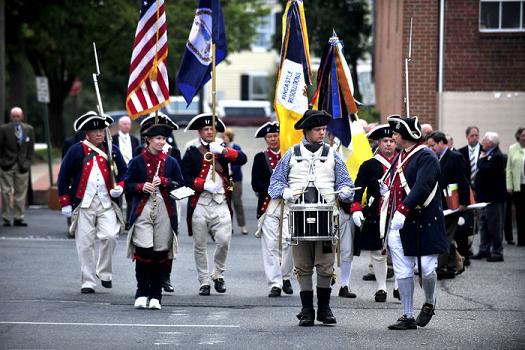Bernard Slave Cabins
One of the more overlooked spots on the Fredericksburg National Battlefield is the Bernard Slave Cabins. This area was the homestead of a number of enslaved African-Americans and a focal point of the fighting that took place near Prospect Hill and the Slaughter Pen Farm. Today the site is accessible via the Bernard Cabins Trail. According to the NMPS website:
Halfway down Lee Drive, a little more than a half mile beyond its intersection with Lansdowne Road, begins one of the newest and least-known trails on the Fredericksburg Battlefield. The trail starts at the road and winds through the woods for half a mile before emerging into a large plowed field overlooking Shannon Airport and the Richmond, Fredericksburg, and Potomac Railroad (now CSX). It terminates at Bernard's Cabins, the site of a small slave community. Bernard's Cabins became an important Confederate artillery position on "Stonewall" Jackson's end of the line. The center of his line was wooded, preventing the Confederate leader from placing any artillery there. Instead, he placed a large number of cannons on either side of the woods and angled the guns toward one another so as to catch any Union troops who might attempt to attack the woods in a deadly crossfire. To the left of the woods, at Bernard's Cabins, stood nine guns of Capt. Greenlee Davidson's battalion. The cabins and their occupants belonged to Arthur Bernard, the owner of Mannsfield, a plantation house that stood about one and a half miles to the east.
The NPS tabletop marker that was erected on the site states: “On this knoll stood Bernard's Cabins, a small community that in 1860 was home to about three dozen slaves. The complex consisted of three two-room cabins, a stone-lined well, and perhaps two additional buildings. This was only one of several such clusters of slave housing scattered across the 1,800-acre ‘Mannsfield’ estate. The men and women who lived here helped power the most prosperous plantation in the Fredericksburg area. Arthur Bernard's plantation house, ‘Mannsfield’ (1766), stood about a mile east of here (it burned in 1863). During the 1862 Battle of Fredericksburg it served as headquarters for three top Union generals - W.B. Franklin, J.F. Reynolds, and W.F. Smith.”
The Historical Marker Database provides detailed GPS data on this spot, as well as photographs depicting the current site and markers. The Bernard Slave Cabin marker includes a 1798 Benjamin Latrobe illustration (above) depicting two slave women preparing tobacco under the watchful eye of an overseer, as well as a 1770 advertisement seeking the return of a runaway slave from the Mannsfield plantation.
NMPS historian Frank O 'Reilly describes the significance of the Bernard Slave Cabins grounds in his book “The Fredericksburg Campaign: Winter War on the Rappahannock.” These small cottage-like buildings presented a potential problem for Confederate Gen. Thomas “Stonewall” Jackson’s artillerists who were forward deployed and attempting to prepare a cross-fire in anticipation of the Federal’s advancement towards Prospect Hill. He writes:
Crutchfield offset the problem somewhat by Captain Greenlee Davidson’s small battalion of guns at the Bernard Slave Cabins to cover Brockenbrough’s left rear. Crutchfield believed that an attack against Brockenbrough’s battalion would expose its flank to a raking oblique fire from Davidson’s guns. Davidson used elements of three batteries with a combination of six 3-inch rifles, two Napoleons, and one light 6-pounder. The artillerist posted Captain William H. Caskie’s Hampden (Virginia) Artillery with another section of Ed Marye’s Fredericksburg Artillery and Lieutenant Charles W. Statham’s Lee (Virginia) Artillery. The batteries unlimbered behind a rise capped by Bernard’s Cabins, three hundred yards behind Brockenbrough, and a thousand yards to R. Lindsay Walker’s left. Some of Marye’s Fredericksburg Artillery fought within sight of their homes. The gunners tore down the Bernard Cabins to clear their field of fire.
This tactic would prove disastrous for those positioned at Bernard’s Cabins and tasked with covering the RF&P railroad. In an article written for The Free Lance-Star’s Town and County titled “Slave cabins were center of 1862 battle maneuverings” fellow NMPS historian Donald Pfanz recalled the futility of the positioning and the resulting devastation that ensued. He wrote:
On the morning of Dec. 13, 1862, Union skirmishers crept forward through the mist-shrouded fields and began shooting at Brockenbrough’s exposed gunners. When Lane’s men were unable to drive them away, Brockenbrough opened on the pesky Union riflemen with canister large cylinders filled with dozens of marble-sized iron balls that had the effect of a giant shotgun blast. Brockenbrough’s guns drew the fire of Union artillery batteries on the plain ahead, and soon the Confederate guns were under intense fire from enemy sharpshooters and cannon alike.
The slave cabins and a small pine grove had stood between Davidson and his Yankee assailants, but no more. By the time he stopped shooting, the cabins were in ruins and the grove had been reduced to kindling. At Bernard’s Cabins, Union shot ignited one of Davidson’s ammunition chests, causing a terrific explosion. Fifteen of 20 shells caught fire and exploded, blackening the ground and stampeding the battery horses. One shell cut a Confederate gunner in two and threw his blackened clothing into a nearby tree; another took off the leg of an officer just above the knee. At one gun alone, five artillerists were injured. Jackson witnessed the vigor of the Union response and wisely cancelled the attack. South of town, at least, the killing was over.
Today, the Bernard Cabins Trail provides one of the most peaceful and enjoyable nature walks on the whole Fredericksburg Battlefield proper. Unfortunately, the cabins themselves are no longer standing and one has to depend entirely on their imagination to envision what this small slave community looked like. Perhaps in the future, either through traditional building reconstruction or virtual 3D-modeling technology, the Bernard Slave Cabins will be resurrected again. Until then, I highly recommend that visitor’s take a moment during their tour to leave the “main drag” of Lee Drive and hike the half a mile down to this unique and important site.
Posted by ny5/pinstripepress
at 11:23 AM EDT
Updated: Wednesday, 28 September 2011 11:52 AM EDT
Permalink |
Share This Post
Troy Davis and the Civil War
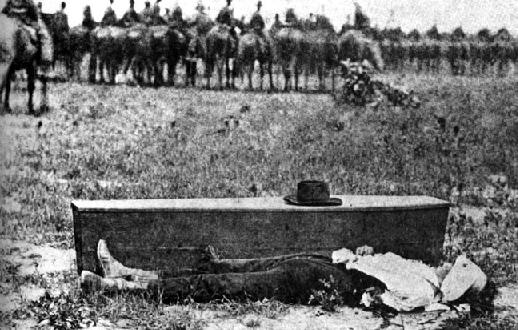
This week’s biggest news story was the controversial execution of Georgia Death Row inmate Troy Davis and the reignited debate over the death-penalty in America. This got me thinking about how public executions have been carried out in our country and their obvious emotional impact on those who witness it.
You may recall a few weeks ago when I mentioned formalizing my lecture for the Richmond Civil War Round Table. That talk will take place in May of next year. The RCWRT folks were very interested in my book on The Civil War in Spotsylvania: Confederate Campfires at the Crossroads, and requested that I speak on that title. Apparently someone at the RT revealed how impressed they were with my extensive use of first-hand recollections. This collection of letters makes up the majority of the book which has become both a reference source and a pleasure read. There is very little glamour or romance in this work, and I think that I met my goal of presenting the miserable and mundane life that Johnny Reb experienced while on campaign. It’s a very “gray” book (no pun intended).
One topic that they specifically mentioned anticipating is the section on camp justice. In the chapter titled “Crime and Punishment: Executions, Courts-Martial and Humiliations,” I present multiple accounts and images of soldiers being punished and killed for crimes against their fellow soldiers. Here is an excerpt:
As the war dragged on into its third and fourth years, soldiers on both sides of the conflict began to flee the army in record numbers. Some were traumatized by the horrors they had witnessed, others were shamed by the atrocities they had committed and many more were disenchanted with the inexperienced officers who ultimately hampered their chances at survival. Southern troops were more likely to desert, as their supplies were dwindling at a more rapid rate compared to their Northern counterparts who were better outfitted. According to Dr. James I. Robertson Jr. in Tenting Tonight, one in every seven Confederates would eventually desert. As the soldiers fell into a deeper sense of desperation, the futility of their fight and cause became overwhelming at times. One Rebel soldier wrote, “Many of our people at home have become so demoralized that they write to their husbands, sons, and brothers that desertion is now not dishonorable.”
In order to curb a mass exodus from spreading throughout the ranks of the Confederate army, officers were forced to make grim examples of those who were apprehended while attempting to abandon their duty. The odds of successfully escaping were said by some to be three to one in favor of the soldier. Those who were caught, however, were dealt with in a swift and deadly manner. Following a court-martial, deserters would often be sentenced to death by firing squad. These public executions were to be carried out in front of the entire camp in an effort to strike fear in the hearts of future would-be fugitives.
Each prisoner would be given an opportunity for prayer with a camp chaplain or priest and then blindfolded and (hopefully) shot dead in the chest by a group of riflemen who usually had one loaded musket and the rest primed with powder in place of projectiles. This was done to help dispel guilt. Many times the prisoner’s body would be positioned so as to fall right into a coffin. Sometimes, the lack of marksmanship among the firing squad required additional volleys to finish the job. This made the horrific affair all the more difficult to watch, as the additional suffering of a fellow countryman was unbearable.
Less drastic punishments involved the public humiliation of wearing berating signage, being forced to do hard labor, the branding of the letter “D” for deserter or “C” for coward on the soldier’s hand or cheek or simply being drummed out of camp in a reprehensible fashion. In an age when nobility was held in the highest regard, the dishonor one would bring upon himself and his family by running away was usually deterrent enough. However, as the trauma of war destroyed one’s optimism, the risk of death and disgrace became less frightening. Some Confederate officials were concerned about the negative effect of camp executions on what remained of troop morale. Several states instituted a no-punishment clause for soldiers who willfully returned to their ranks. One governor wrote a public affirmation that stated,
“Many of you have, doubtless, remained at home after the expiration date of your furloughs, without the intention to desert the cause of your country, and you have failed to return to your Commands for fear of the penalty to which you may be subjected. Many of you have left your Commands without leave, under the mistaken notion that the highest duty required you to provide sustenance and protection to your families. Some have been prompted to leave by one motive and some by others. Very few, I am persuaded, have left with the intent to abandon the cause of the South.” He added, “I am authorized to say that ALL WHO WILL without delay VOLUNTARILY return to their Commands, will receive a lenient and merciful consideration; and that none, who so return within forty days from this date, will have the penalty of death inflicted on them.”
In a letter from Spencer Glasgow Welch, a surgeon in the 13th South Carolina Volunteer Infantry (McGowan’s Brigade), to his wife, the physician details the events of an execution by firing squad:
Camp near Rappahannock River Va
March 5, 1863
Edwin Jim Allen and Ben Strother took dinner with me yesterday and I think I gave them a pretty good dinner for camp. We had biscuit, excellent ham, fried potatoes, rice, light bread butter, stewed fruit and sugar. They ate heartily as soldiers always do. Edwin is not suffering from his wound, but on account of it he is privileged to have his baggage hauled. A man was shot near our regiment last Sunday for desertion. It was a very solemn scene. The condemned man was seated on his coffin with his hands tied across his breast. A file of twelve soldiers was brought up to within six feet of him, and at the command, a volley was fired right into his breast. He was hit by but one ball because eleven of the guns were loaded with powder only. This was done so that no man can be certain that he killed him. If he was the thought of it might always be painful to him. I have seen men marched through the camps under guard with boards on their backs, which were labeled “I am a coward,” or “I am a thief,” or “I am a shirker from battle” and I saw one man tied hand and foot astride the neck of a cannon and exposed to view for sixteen hours. These severe punishments seem necessary to preserve discipline.
Spencer Glasgow Welch
What this (and the other letters not quoted here) tells me is that even in time of war when mass brutality and murder are a daily occurrence, the execution of one’s fellow man had a definite impact on those who witnessed it. This trauma is not unlike what is being experienced today as Americans are rethinking whether or not the administration of the death sentence is still tolerable.
Posted by ny5/pinstripepress
at 10:27 AM EDT
Updated: Friday, 23 September 2011 12:06 PM EDT
Permalink |
Share This Post
50 years later, Maris still matters
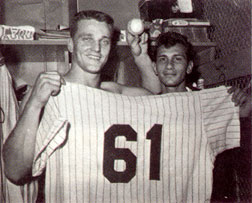 This weekend the New York Yankees organization will commemorate the 50th anniversary of Roger Maris’ historic 1961 homerun season. Even the most ardent Yankees haters (to include my friend and co-author Eric Wittenberg) have to give Roger respect for breaking one of the most difficult and coveted records in all of professional sports. The Maris family will be on hand, as well as surviving members of the 1961 Yankees squad. To commemorate this commemoration, here is an article that I penned for Baseball-Almanac a few years ago titled 61 in ‘61:
This weekend the New York Yankees organization will commemorate the 50th anniversary of Roger Maris’ historic 1961 homerun season. Even the most ardent Yankees haters (to include my friend and co-author Eric Wittenberg) have to give Roger respect for breaking one of the most difficult and coveted records in all of professional sports. The Maris family will be on hand, as well as surviving members of the 1961 Yankees squad. To commemorate this commemoration, here is an article that I penned for Baseball-Almanac a few years ago titled 61 in ‘61:
When modern baseball fans look back at all the classic record-breaking moments that they have witnessed in their lifetime, it is quite possible that one number really stands out in their mind. That number is 62. Why? Because most of them could never forget the excitement and pageantry of watching Mark McGwire and Sammy Sosa [since then exposed as juicers] both set new standards in 1998, by breaking the all-time single season home run record, the most revered record in all of sports.
It was the first time, in a long time, that America’s passion for the game resembled the glory days, when it truly was our nation’s pastime and the players were larger-than-life heroes. And although their legacy has come under scrutiny due to the steroids scandal that has stained the entire era, both players were credited for giving major league baseball a much needed shot in the arm (no pun intended).
Despite the fact that another suspicious slugger named Barry Bonds [also a chemically enhanced fraud] has since set the new magic number at 73, their race seemed more romantic and brought a lot of overdue attention to the man whose record they were chasing, Roger Maris. It also seemed more fitting as they were both competing in a similar situation as Maris and his teammate Mickey Mantle had in 1961. Both contests were between two friends pushing each other to be better on and off the field; neither ever letting their competitiveness get in the way of their friendship or their friendship get in the way of their competitiveness.
The press had dubbed them “The M&M Boys” and their story is an incredible example of what impact sports can have when two teammates who are as opposite as can be, come together to create something special. To understand this, one has to look at both men individually to see what they accomplished together.
Roger Maris was a great ballplayer who never got the respect he deserved. Unfortunately, the press never really considered him “hero” material, but when you look at his life, on and off the field, you realize that he was the ideal hero. He was a good husband, father and athlete, who was more concerned with the success of his team than his own individual stats. (An attitude seldom seen in today’s game.)
No record ever hung around a player’s neck more like an albatross than Roger Maris’ 61 homers in 1961. As late as the 1980 All-Star Game he fumed, “They acted as though I was doing something wrong, poisoning the record books or something.” In surpassing Babe Ruth’s supposedly unsurpassable record, Maris faced the hostility of the baseball public on several fronts.
First, although he had been the 1960 American League MVP, he was basically a .269 hitter, still an unknown quantity unworthy of dethroning America’s greatest sports hero. That he played the game with a ferocious intensity and that he was a brilliant right fielder and an exceptional baserunner, well, that was irrelevant.
Second, for most of the season Maris wasn’t the only batter chasing the ghost of the Babe. His teammate Mickey Mantle, the successor to Ruth, to Lou Gehrig, and to Joe DiMaggio, was the people’s choice. It was Mantle who hit 500-foot home runs that thrilled fans. Mantle garnered support as the season-long chase headed toward September.
Maris? He was merely efficient; a left-handed hitter who had just the swing to take advantage of that friendly porch in Yankee Stadium’s right field. He rarely hit a homer further than 400 feet. His charisma quotient was almost nil. That 1961 season was the first year of expansion and the first year of the 162-game season. With the addition of two teams to the American League, many hitters had their greatest seasons, such as Norm Cash, who somehow hit .361, corked bat and all. Expansion also meant an expanded schedule. Ruth had set his record in 1927 in a 154-game season.
So for many people, Maris’ feat would be tainted if he needed more than 154 games to break Ruth’s record. Commissioner Ford Frick even announced that if Maris took more than 154 games to break the record it would go into the record books as a separate accomplishment from Ruth’s, with an asterisk, so to speak. “As a ballplayer, I would be delighted to do it again,” Maris once remarked. “As an individual, I doubt if I could possibly go through it again. They even asked for my autograph at mass.” As always, Maris was being honest. He once said about playing baseball for a living, “It’s a business. If I could make more money down in the zinc mines, I’d be mining zinc.” Could anyone have been more unlike the Babe?
In his first game in Yankee pinstripes, Maris singled, doubled, and smacked two home runs. His MVP numbers included a league leading 112 RBIs and 39 home runs, only one behind league-leader Mantle, although he missed 18 games with injuries. In 1961 Maris stayed healthy and played 161 games, a career high. As he and Mantle made their charge at Ruth’s home run record, the Yankees even considered switching Maris, who batted third, and Mantle, who batted fourth, to give Mantle a better shot at the record.
If the switch had been made, Maris almost certainly would not have broken the record. Consider this: Maris did not receive one intentional walk in 1961. After all, who would walk Maris to get to Mantle? While most players would have welcomed such a dilemma, Maris did not. “I never wanted all this hoopla,” he said. “All I wanted is to be a good ballplayer, hit 25 or 30 homers, drive in around a hundred runs, hit .280, and help my club win pennants. I just wanted to be one of the guys, an average player having a good season.”
Mantle fell back in the middle of September when he suffered a hip injury. Maris kept it up and went into the 154th game of the season in Baltimore with 58 homers. He gave it his best shot that night. He hit No. 59 and then hit a long foul on his second-to-last at bat. Alas, in his last at bat, against Hoyt Wilhelm, he hit a checked-swing grounder. “Maybe I’m not a great man, but I damn well want to break the record,” he said. He finally did it on the last day of the season against the Red Sox’s Tracy Stallard. Fittingly it went about 340 feet into Yankee Stadium’s right field porch. Maris also made back-to-back MVP honors, driving in a league leading 142 runs.
As expected MLB Commissioner (and The Babe’s ghostwriter), Ford C. Frick ruled that since Maris had played in a 162-game schedule (as opposed to Ruth’s 154), his record would be listed officially with a qualifying asterisk; this decision stood until 1991. Although, he never experienced the same hitting streak, his consistency as a power hitter continued and he hit 275 home runs during his 12-year career.
Maris remained bitter about the experience. He said of that season, “Do you know what I have to show for 61 home runs? Nothing. Exactly nothing.” Despite all the controversy, Maris was awarded the American League’s MVP Award for the second straight year. It is said, however, that the stress of pursuing the record was so great for Maris that his hair occasionally fell out in clumps during the season. Later Maris even surmised that it might have been better all along had he not broken the record or even threatened it at all.
Mickey Mantle, like Maris, was also an exceptional athlete from the Midwest, but with a press-friendly personality and movie-star good looks that made him a fan favorite both on and off the field. “The Mick” fit into the Yankee persona perfectly and his contributions to the pinstripes were on par with the long line of Yankee legends that had come before him. Mickey represented what America is all about: a young kid from the mid-west, going to the big city, living the American dream and becoming a sports legend. A courageous player, he achieved greatness despite an arrested case of osteomyelitis, numerous injuries and frequent surgery.
The powerful Yankee switch-hitter belted 536 homers (many of the tape-measure variety), won the American League home run and slugging titles four times, collected 2,415 hits, and batted .300 or more 10 times. The three-time MVP was named to 20 All-Star teams. He holds numerous World Series records, including most home runs (18).
Opposites yes, but also equals, both summed up their own careers perfectly. Mickey said, “It was all I lived for, to play baseball.” and Roger was quoted as saying, “All I wanted was to be a good ballplayer.”
Maris has not been elected to the National Baseball Hall of Fame, but his teammate Mantle was elected unanimously in his first year of eligibility. Many historians credit Ford Frick’s decision to ‘footnote’ Maris’ epic achievement as having an effect on his ability to be put on the ballot. Others simply state that Maris did not have the cumulative statistics to warrant such an honor. Ironically, the decision to add the asterisk has also stained the commissioner’s legacy.
The first MLB leader not to have a political background, Ford Frick was a multi-talented journalist with experience in teaching, ghost writing and advertising. After graduating from DePauw University, Frick took a position as an English teacher at Colorado High School and also freelanced as a beat writer for the Colorado Springs Gazette. Two years later, he left teaching to become the supervisor of training in the rehabilitation division of the War Department for four states (Colorado, Utah, New Mexico and Wyoming). Although the position was important, Frick could not ignore his “writer’s bug” and briefly worked for the Rocky Mountain News in Denver before returning to Colorado Springs to open his own advertising agency and write a weekly editorial column for the Colorado Springs Telegraph.
An enthusiastic baseball fan, Frick landed his dream job in 1922 after joining the sports staff of the New York American. The following year, he moved on to the Evening Journal where he covered the New York Yankees and eventually became a ghostwriter for Babe Ruth. Things got even better when he finally left the typewriter behind in favor of the microphone to become a sportscaster with station WOR. A rising figure in the sports media, Frick was named the first director of the National League Service Bureau and was put in charge of all publicity for Major League Baseball. He excelled rapidly at the position and was later elected as the President of the National League, succeeding John A. Heydler.
His first act as president was a passionate proposal for the establishment of a National Baseball Museum to honor the greatest players ever to take the field. This, of course, led to the Hall of Fame. He was also instrumental in saving several franchises from bankruptcy, including the Brooklyn Dodgers, Philadelphia Phillies, Boston Braves, Cincinnati Reds and the Pittsburgh Pirates. Immensely popular amongst the owners, he held the position until September 1951 when sixteen of them elected him commissioner on September 20, 1951.
During his tenure, Frick was responsible for many changes in the reconstruction, expansion and transition of baseball. Some of the major changes included the growth from eight to ten teams in each league; the establishment of multiple national television contracts; a league draft and college scholarship system; and the introduction of baseball on the international level in countries such as Japan, Central America, Holland, Italy and Africa.
Not unlike his Major League Baseball forefathers, Frick was contested on several occasions for policies that did not agree with the public’s view. The verdict surrounding Roger Maris’ single-season homerun record remained at the top of that list. The decision stood for the next thirty years and remained as a black eye on an otherwise stellar career. Frick was inducted into the Baseball Hall of Fame in 1970. He also became the namesake of the Ford C. Frick Award, which is given to outstanding Hall of Fame broadcasters.
In 1991, then MLB Commissioner Fay Vincent officially removed the asterisk from the record. Unfortunately, Roger Maris had passed away in 1985, never receiving full credit for his unparalleled athletic accomplishment.
61 HOMERUNS BY ROGER MARIS HR | Game | Date / Box | Pitcher | Team | Throws | Where | Inning |
| 1 | 11 | 04-26-1961 | Paul Foytack | Detroit | Right | Away | 5th |
| 2 | 17 | 05-03-1961 | Pedro Ramos | Minnesota | Right | Away | 7th |
| 3 | 20 | 05-06-1961 | Eli Grba | Los Angeles | Right | Away | 5th |
| 4 | 29 | 05-17-1961 | Pete Burnside | Washington | Left | Home | 8th |
| 5 | 30 | 05-19-1961 | Jim Perry | Cleveland | Right | Away | 1st |
| 6 | 31 | 05-20-1961 | Gary Bell | Cleveland | Right | Away | 3rd |
| 7 | 32 | 05-21-1961 | Chuck Estrada | Baltimore | Right | Home | 1st |
| 8 | 35 | 05-24-1961 | Gene Conley | Boston | Right | Home | 4th |
| 9 | 38 | 05-28-1961 | Cal McLish | Chicago | Right | Home | 2nd |
| 10 | 40 | 05-30-1961 | Gene Conley | Boston | Right | Away | 3rd |
| 11 | 40 | 05-30-1961 | Mike Fornieles | Boston | Right | Away | 8th |
| 12 | 41 | 05-31-1961 | Billy Muffett | Boston | Right | Away | 3rd |
| 13 | 43 | 06-02-1961 | Cal McLish | Chicago | Right | Away | 3rd |
| 14 | 44 | 06-03-1961 | Bob Shaw | Chicago | Right | Away | 8th |
| 15 | 45 | 06-04-1961 | Russ Kemmerer | Chicago | Right | Away | 3rd |
| 16 | 48 | 06-06-1961 | Ed Palmquist | Minnesota | Right | Home | 6th |
| 17 | 49 | 06-07-1961 | Pedro Ramos | Minnesota | Right | Home | 3rd |
| 18 | 52 | 06-09-1961 | Ray Herbert | Kansas City | Right | Home | 7th |
| 19 | 55 | 06-11-1961 | Eli Grba | Los Angeles | Right | Home | 3rd |
| 20 | 55 | 06-11-1961 | Johnny James | Los Angeles | Right | Home | 7th |
| 21 | 57 | 06-13-1961 | Jim Perry | Cleveland | Right | Away | 6th |
| 22 | 58 | 06-14-1961 | Gary Bell | Cleveland | Right | Away | 4th |
| 23 | 61 | 06-17-1961 | Don Mossi | Detroit | Left | Away | 4th |
| 24 | 62 | 06-18-1961 | Jerry Casale | Detroit | Right | Away | 8th |
| 25 | 63 | 06-19-1961 | Jim Archer | Kansas City | Left | Away | 9th |
| 26 | 64 | 06-20-1961 | Joe Nuxhall | Kansas City | Left | Away | 1st |
| 27 | 66 | 06-22-1961 | Norm Bass | Kansas City | Right | Away | 2nd |
| 28 | 74 | 07-01-1961 | Dave Sisler | Washington | Right | Home | 9th |
| 29 | 75 | 07-02-1961 | Pete Burnside | Washington | Left | Home | 3rd |
| 30 | 75 | 07-02-1961 | Johnny Klippstein | Washington | Right | Home | 7th |
| 31 | 77 | 07-04-1961 | Frank Lary | Detroit | Right | Home | 8th |
| 32 | 78 | 07-05-1961 | Frank Funk | Cleveland | Right | Home | 7th |
| 33 | 82 | 07-09-1961 | Bill Monbouquette | Boston | Right | Home | 7th |
| 34 | 84 | 07-13-1961 | Early Wynn | Chicago | Right | Away | 1st |
| 35 | 86 | 07-15-1961 | Ray Herbert | Chicago | Right | Away | 3rd |
| 36 | 92 | 07-21-1961 | Bill Monbouquette | Boston | Right | Away | 1st |
| 37 | 95 | 07-25-1961 | Frank Baumann | Chicago | Left | Home | 4th |
| 38 | 95 | 07-25-1961 | Don Larsen | Chicago | Right | Home | 8th |
| 39 | 96 | 07-25-1961 | Russ Kemmerer | Chicago | Right | Home | 4th |
| 40 | 96 | 07-25-1961 | Warren Hacker | Chicago | Right | Home | 6th |
| 41 | 106 | 08-04-1961 | Camilo Pascual | Minnesota | Right | Home | 1st |
| 42 | 114 | 08-11-1961 | Pete Burnside | Washington | Left | Away | 5th |
| 43 | 115 | 08-12-1961 | Dick Donovan | Washington | Right | Away | 4th |
| 44 | 116 | 08-13-1961 | Bennie Daniels | Washington | Right | Away | 4th |
| 45 | 117 | 08-13-1961 | Marty Kutyna | Washington | Right | Away | 1st |
| 46 | 118 | 08-15-1961 | Juan Pizarro | Chicago | Left | Home | 4th |
| 47 | 119 | 08-16-1961 | Billy Pierce | Chicago | Left | Home | 1st |
| 48 | 119 | 08-16-1961 | Billy Pierce | Chicago | Left | Home | 3rd |
| 49 | 124 | 08-20-1961 | Jim Perry | Cleveland | Right | Away | 3rd |
| 50 | 125 | 08-22-1961 | Ken McBride | Los Angeles | Right | Away | 6th |
| 51 | 129 | 08-26-1961 | Jerry Walker | Kansas City | Right | Away | 6th |
| 52 | 135 | 09-02-1961 | Frank Lary | Detroit | Right | Home | 6th |
| 53 | 135 | 09-02-1961 | Hank Aguirre | Detroit | Left | Home | 8th |
| 54 | 140 | 09-06-1961 | Tom Cheney | Washington | Right | Home | 4th |
| 55 | 141 | 09-07-1961 | Dick Stigman | Cleveland | Left | Home | 3rd |
| 56 | 143 | 09-09-1961 | Mudcat Grant | Cleveland | Right | Home | 7th |
| 57 | 151 | 09-16-1961 | Frank Lary | Detroit | Right | Away | 3rd |
| 58 | 152 | 09-17-1961 | Terry Fox | Detroit | Right | Away | 12th |
| 59 | 155 | 09-20-1961 | Milt Pappas | Baltimore | Right | Away | 3rd |
| 60 | 159 | 09-26-1961 | Jack Fisher | Baltimore | Right | Home | 3rd |
| 61 | 163 | 10-01-1961 | Tracy Stallard | Boston | Right | Home | 4th |
Data courtesy of Baseball-Almanac.com
Posted by ny5/pinstripepress
at 9:34 PM EDT
Updated: Thursday, 22 September 2011 8:46 AM EDT
Permalink |
Share This Post
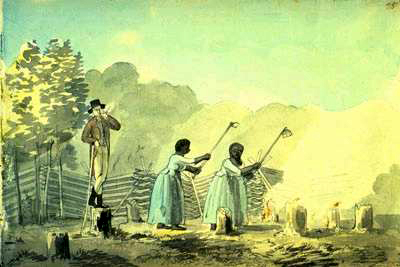
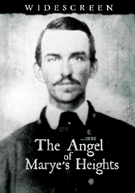
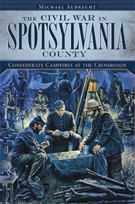
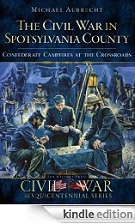



 This weekend the New York Yankees organization will commemorate the 50th anniversary of Roger Maris’ historic 1961 homerun season. Even the most ardent Yankees haters (to include my friend and
This weekend the New York Yankees organization will commemorate the 50th anniversary of Roger Maris’ historic 1961 homerun season. Even the most ardent Yankees haters (to include my friend and 